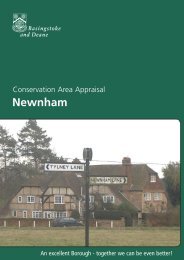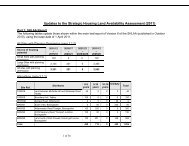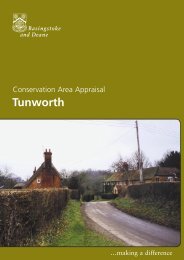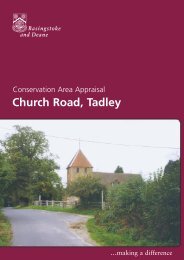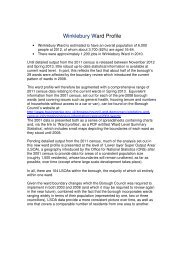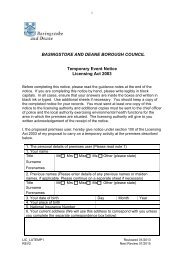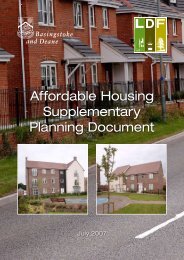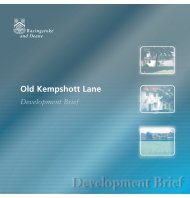Conservation Area Appraisal St Mary Bourne and Stoke
Conservation Area Appraisal St Mary Bourne and Stoke
Conservation Area Appraisal St Mary Bourne and Stoke
You also want an ePaper? Increase the reach of your titles
YUMPU automatically turns print PDFs into web optimized ePapers that Google loves.
<strong>Conservation</strong> <strong>Area</strong> <strong>Appraisal</strong>Location <strong>and</strong> Population<strong>St</strong> <strong>Mary</strong> <strong>Bourne</strong> <strong>and</strong> <strong>St</strong>oke are situated about 4 miles north-west ofWhitchurch within the North Wessex <strong>Area</strong> of Outst<strong>and</strong>ing NationalBeauty. The villages are located within a valley at the north-western endof the <strong>Bourne</strong>, which is a tributary of the River Test. The <strong>Conservation</strong><strong>Area</strong> covers the two villages <strong>and</strong> the area of about one mile betweenthem, including the small hamlet of Swampton.The population of the <strong>St</strong> <strong>Mary</strong> <strong>Bourne</strong> <strong>and</strong> <strong>St</strong>oke <strong>Conservation</strong> <strong>Area</strong> in1998 was approximately 922 (projection based on the Hampshire CountyCouncil Planning Department Small <strong>Area</strong> Population Forecasts 1995).<strong>St</strong>oke House from the westHistoric DevelopmentSettlement OriginsAt the time of the Domesday Survey, the manors of <strong>St</strong> <strong>Mary</strong> <strong>Bourne</strong><strong>and</strong> <strong>St</strong>oke belonged to Hurstbourne Priors, along with the manors ofBinley, Egbury <strong>and</strong> Weeke. In 1565, Sir Robert Oxenbridge, owner ofHustbourne Priors, was ordered to prove by what title he held the fivemanors. A law suit began to determine whether they were manorsin their own right. They were judged to have always been hamlets ofHurstbourne Priors, <strong>and</strong> Sir Richard obtained recognition of his title tothem.<strong>St</strong>oke House <strong>and</strong> Manor FarmhouseQueen Elizabeth I is said to have taken tea at Valley Farm in <strong>St</strong>oke on aspringtime outing.<strong>St</strong> Peter’s Church dates from around 1157. The font a very rare blackmarble font, which is at least 800 years old was brought from Tournai inBelgium <strong>and</strong> is one of only four in Hampshire (<strong>and</strong> considered the finestin the country). An effigy of a crusader knight, recessed in the southwall of the church, may be one of the Oxenbridge family.Settlement DevelopmentThe prevailing former use of the whole <strong>Conservation</strong> <strong>Area</strong> appears tohave been agricultural, with evidence of several of the older farms stillsurviving. For example, Butler’s Farmhouse <strong>and</strong> Manor Farmhouse datefrom the 16th century whilst Berrydown Farmhouse dates from circa1500 <strong>and</strong> 1600. Other buildings retain the name ‘Farm’, examples beingValley Farmhouse, <strong>and</strong> Summerbee Farmhouse. The extensive watercressbeds to the south-east of the village are still an important local business.Other uses reflect the settlement’s development at crossing points overthe river, as for example the concentration of former inns <strong>and</strong> a malthouse around the square in <strong>St</strong> <strong>Mary</strong> <strong>Bourne</strong>.The Church of <strong>St</strong> Peter <strong>and</strong> <strong>St</strong> Peter’sCottage<strong>St</strong> <strong>Mary</strong> <strong>Bourne</strong> <strong>and</strong> <strong>St</strong>oke 3



